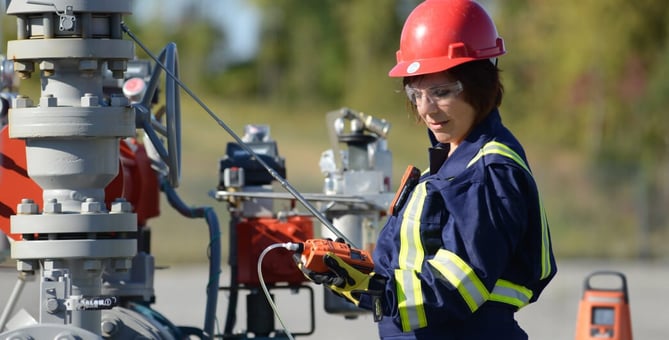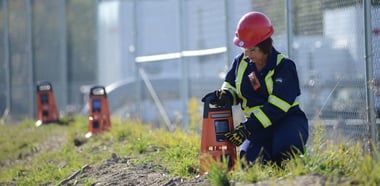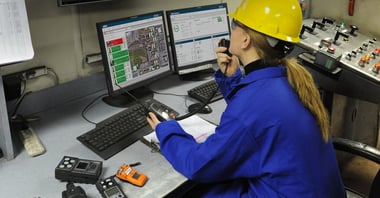You’re responsible for your workers’ safety, making sure they’re not injured or worse on your watch. And when it comes to lone workers, this is even more challenging — and more important.
When lone workers encounter a threat, whether a gas hazard, dangerous weather, or a medical emergency, they can’t rely on peers nearby to help. They’re counting on you—and you alone.
Manual check ins are one solution that many companies rely on; lone workers contact their safety managers at regular intervals to confirm their status. While manual check ins might seem to solve the safety challenges your lone workers face, they use up valuable time and put your team at unnecessary risk. When a worker misses a check in, you might be unsure how to respond. Did they forget? Do you call for help? If there has been an incident, what is the danger?
In the case of an emergency, these questions and the time it takes to make a decision can mean the difference between life and death for your worker.

Industrial Scientific offers several valuable solutions to help you always monitor lone workers’ safety. With real-time alerts from iNet® Now live monitoring, it’s easy to ensure the right people are notified the moment one of your workers is at risk. Supervisors can be notified any time a worker has been exposed to a hazardous gas, has fallen and is no longer moving, has pressed their monitor’s panic button to signal distress, or has entered a pre-determined geographic location (via geofencing).
These alarms can be acted upon immediately. However, it’s important to note that these real-time alerts are only effective if they are acted upon instantly. Many users have teams of lone workers who operate around the clock in different time zones and who cover vast territories. Some of these companies are not equipped with internal staff that can guarantee reliable monitoring and response times for these lone workers should something happen to them. Our 24/7 Professional Monitoring solution, an addition to iNet Now, fills this gap.
How Does 24/7 Professional Monitoring Work?
The 24/7 Professional Monitoring center is fully integrated with iNet Now and iNet Control. Simply purchase a set number of 24/7 Professional Monitoring subscriptions and then use iNet Control to select any worker who needs to be monitored by this service. As soon as a designated worker’s username is assigned to a connected device, the 24/7 Professional Monitoring center will track that device’s alerts and respond according to the customer’s established escalation plan.
What is an Escalation Plan?
Your team determines which steps the monitoring center should follow, ensuring that every alert is addressed exactly how you want. For example, you can configure different escalation plans based on who the user is, which type of alarm has gone off, and more. Escalation plans are highly configurable to suit your specific needs.
Here are some sample escalation plans:
Example 1: In case of a man-down alarm or a panic alarm
Step 1: Call the user’s cell phone at 123-123-1234.
Step 2: If user does not answer, call 911 and provide the user’s last known location.
Example 2: In case of high gas alarm, TWA alarm or panic alarm
Step 1: Call the user’s cell phone number. If no answer, call user’s cell phone again.
Step 2: If no answer, call team lead John Smith at 123-123-1234
Step 3: If no answer, call team supervisor Bob White at 123-456-7890
Step 4: If no answer, call Safety at 234-234-2345
Step 5: If no answer, call 911 and provide the user’s last known location.
Our 24/7 Professional Monitoring solution enhances our award-winning iNet Now live monitoring tool by providing a team of agents who promptly pursue alerts until resolution—no matter the time of day. It also eliminates the need for manual check-ins from your lone workers. With automatic status updates to our 24/7 Professional Monitoring center through their gas monitor, workers can focus on the job at hand, improving their safety and productivity—and management can rest assured that no alert will go unnoticed.



